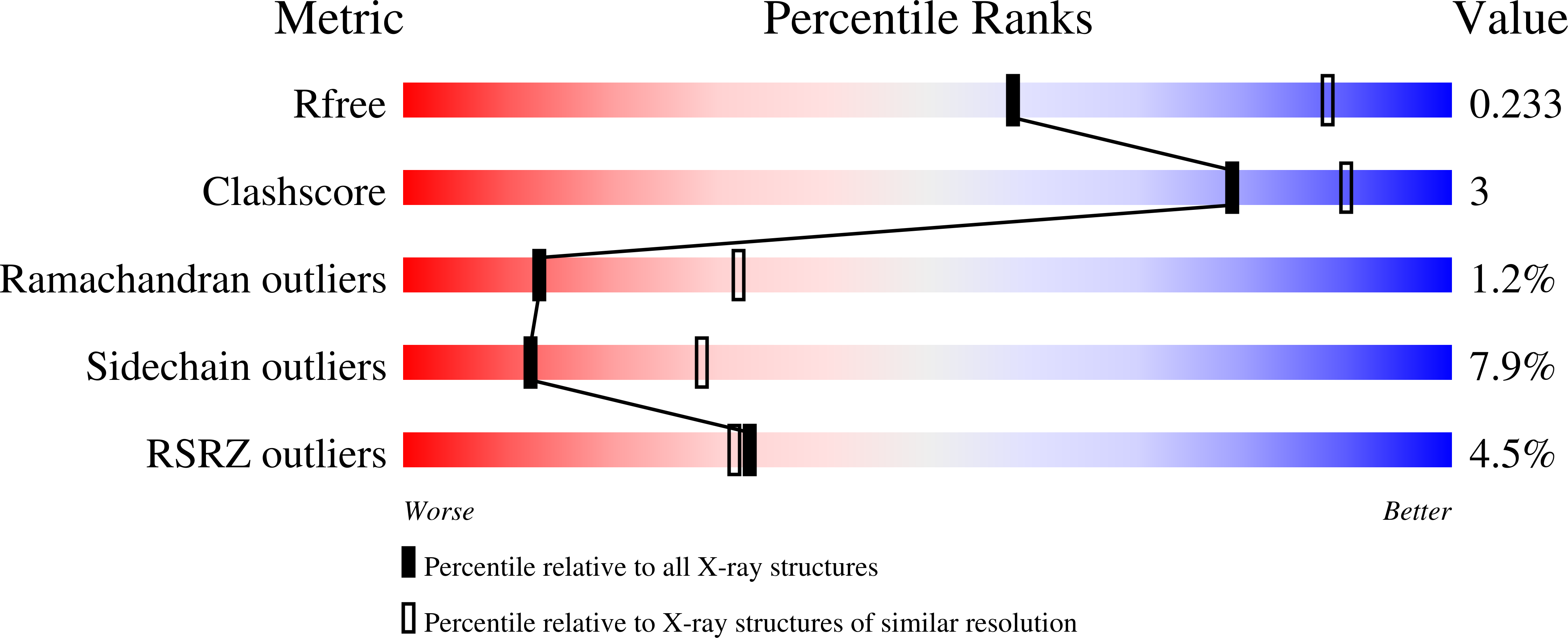Synthesis of Avibactam Derivatives and Activity on beta-Lactamases and Peptidoglycan Biosynthesis Enzymes of Mycobacteria.
Edoo, Z., Iannazzo, L., Compain, F., Li de la Sierra Gallay, I., van Tilbeurgh, H., Fonvielle, M., Bouchet, F., Le Run, E., Mainardi, J.L., Arthur, M., Etheve-Quelquejeu, M., Hugonnet, J.E.(2018) Chemistry 24: 8081-8086
- PubMed: 29601108
- DOI: https://doi.org/10.1002/chem.201800923
- Primary Citation of Related Structures:
6FJ1 - PubMed Abstract:
There is a renewed interest for β-lactams for treating infections due to Mycobacterium tuberculosis and M. abscessus because their β-lactamases are inhibited by classical (clavulanate) or new generation (avibactam) inhibitors, respectively. Here, access to an azido derivative of the diazabicyclooctane (DBO) scaffold of avibactam for functionalization by the Huisgen-Sharpless cycloaddition reaction is reported. The amoxicillin-DBO combinations were active, indicating that the triazole ring is compatible with drug penetration (minimal inhibitory concentration of 16 μg mL -1 for both species). Mechanistically, β-lactamase inhibition was not sufficient to account for the potentiation of amoxicillin by DBOs. Thus, the latter compounds were investigated as inhibitors of l,d-transpeptidases (Ldts), which are the main peptidoglycan polymerases in mycobacteria. The DBOs acted as slow-binding inhibitors of Ldts by S-carbamoylation indicating that optimization of DBOs for Ldt inhibition is an attractive strategy to obtain drugs selectively active on mycobacteria.
Organizational Affiliation:
Sorbonne Université, Sorbonne Paris Cité, Université Paris Descartes, Université Paris Diderot, INSERM, Centre de Recherche des Cordeliers, CRC, 75006, Paris, France.


















